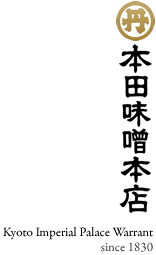History of Miso
The Heian Period
8th -12th century
Only for the social elite
During the Heian period, miso was a delicacy eaten only by the nobility and monks; it was strictly off limits to the commoner. It was also given as a gift or provided as wages for the social elite. During this period, miso was spread directly on food or eaten straight rather than used as a seasoning, as is common today.
The presence of specialty miso shops—a hishio shop in eastern Kyoto and a misio shop in western Kyoto—are recorded in the engishiki, a Japanese book of laws and regulations
The Kamakura and Muromachi Periods
12th -16th century
A staple among samurai
Soup made from mashed miso soybeans became a staple for the Kamakura samurai during this era. Later, miso soup found its way into the diets of the common people as farmers began making their own homemade miso.
The nobility coined the expression shiromiso (white miso), and was used in chakaiseki (small dishes served with tea).
The Warring States Period
15th-16th century
The ingredient for victory
During these hundred years of civil war, the calories in rice and the nutrients in miso played an important role in securing victory on the battlefield. As a result, the benefits of this precious paste came to be held in even greater esteem, and efforts were made to improve the fermenting process.
The Edo Period
17th-19th century
A delicacy of austerity
The importance of miso grew even more during this period, especially after the shogunate issued an "austerity ordinance” urging samurai and townsfolk alike to embrace frugal lifestyles and eating habits. A wealthy merchant class also began to emerge at this time, however, and demand for high-grade miso also rose, spurring the development of increasingly sophisticated recipes and products. The dual trends towards frugality and luxury further boosted demand for the product, and miso shops in the major cities of Edo (former name of Tokyo) and Kyoto enjoyed brisk trading.
Today
The export of miso is increasing every year as its health benefits are being discovered by an ever-growing international consumer base.
The 2006 export market shares were as follows: North America: 47%, Asia: 31%, Europe: 15%, with the remainder going to Oceania, the Middle East, Latin America, and Africa.

